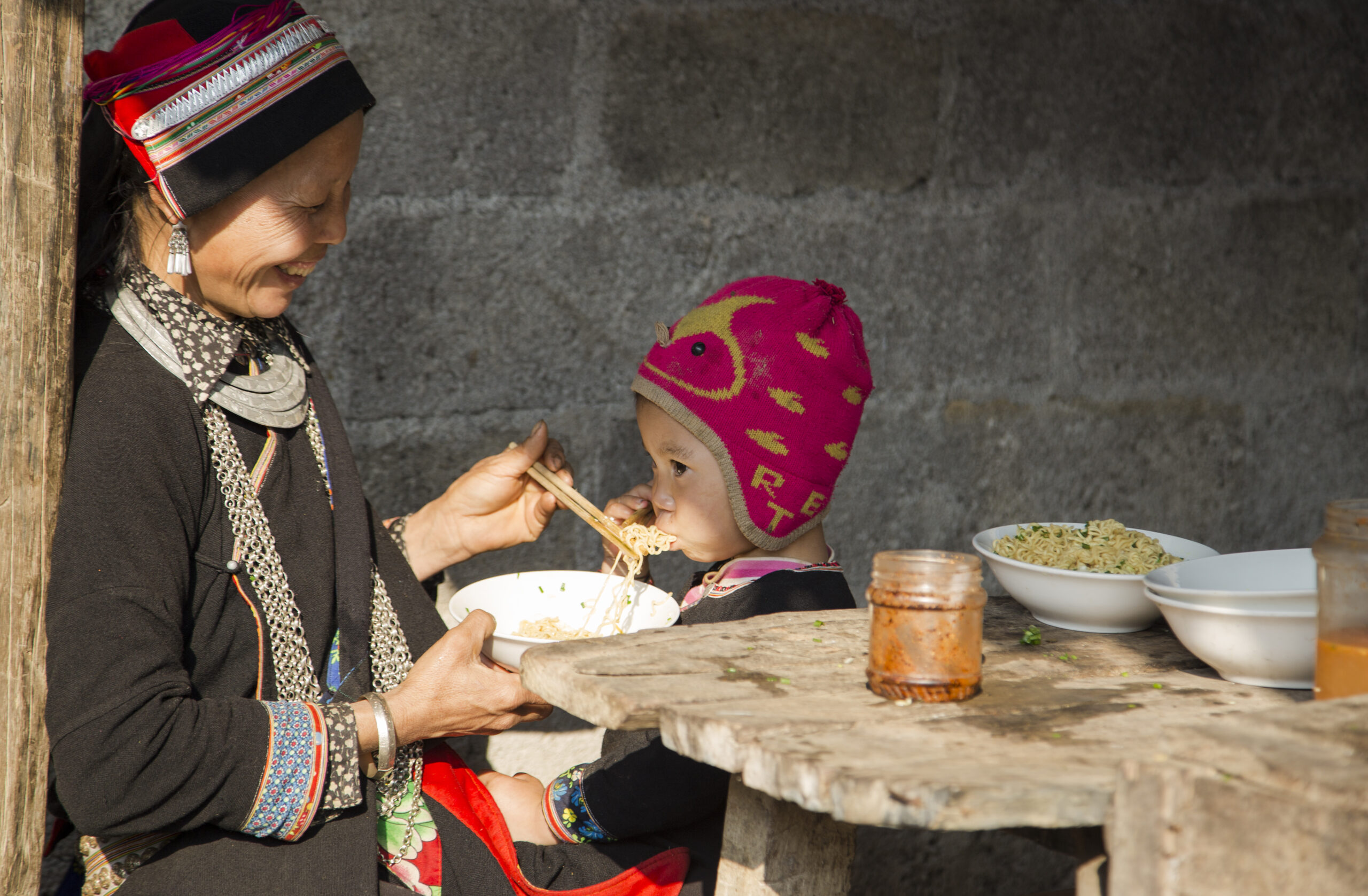The past 18 months have put a once in a lifetime level of pressure on the world. The COVID-19 pandemic has provoked a global health crisis, disrupted global food systems, and reversed years of progress on the Sustainable Development Goals (SDGs), right at the start of the Decade of Action, the 10 years that were meant to accelerate delivery of the SDGs by 2030.
Today, we stand at a critical juncture.
The future of the world depends on good food. Good food keeps us healthy, it helps us reach our potential, it strengthens our communities, powers our economies and protects our planet.
“Good food to me simply means the accessibility to adequate quantities of nutritious and safe food that are sustainably produced and responsibly consumed in a manner that ensures the most minimal wastage possible.”
– Albert Kure, for the Good Food For All campaign

Yet even before the COVID-19 pandemic, swathes of the global population were unable to access good food due to a range of economic, financial, geographical, climatic, cultural, social and political factors.
After the pandemic hit, these numbers increased dramatically.
The increase in prevalence of moderate or severe food insecurity in 2020 was equal to that of the previous five years combined, with nearly one in three people across the globe not having access to adequate food. This amounted to an increase of almost 320 million people in a single year.
An estimated 118 million more people went hungry in 2020 than in 2019 with 21% of the population in Africa facing hunger, more than double the proportion of any other region.
Geographical and regional inequalities have been intensified by the pandemic. Of the total 768 million undernourished people in 2020, more than half live in Asia, and more than one-third in Africa. The gender gap too has been increased, with moderate or severe food insecurity being 10% higher among women in 2020 than in men.
Where do these figures come from?
Every year a collaboration of key United Nations (UN) organisations and specialised agencies team up to produce a report called the State of Food Security and Nutrition in the World, otherwise known as the SOFI report.
The 2020 SOFI report warned of the dire impact the COVID-19 outbreak could have on global food systems and world hunger. The 2021 SOFI report, published this July, highlights how these warnings have come to fruition, and asks the critical question – how did the world get to this point?
The reality is that long before the COVID-19 outbreak, the world was not on track to achieve the UN 2030 Agenda aim of ending world hunger and malnutrition in all its forms by 2030.
The 2021 SOFI report warns that “COVID-19 is just the tip of the iceberg”, with vulnerabilities in global food systems forming over recent years in response to major drivers including conflict, climate shocks, and economic disruption.
Many people cannot afford the cost of healthy diets, as a result of both rising prices for nutritious food and falling incomes. These fluctuations create insecurity in global food chains and impact all forms of malnutrition.

So, what’s the solution?
Whilst 2020 presented immense challenges for the world, it also served as a warning and taste of the future to come if the world does not commit to more resolute actions to change course.
The report tackles both present and imminent challenges to global food systems in full, arguing that to make any real sustainable and significant gains against the major drivers of food security, interventions and programmes must take a holistic approach.
Transformation of food systems to-date has been hampered by the siloed nature of national, regional and global policies, strategies, investments and legislation. Crucial opportunities to jointly tackle factors such as political stability or economic recovery, disaster risk reduction and climate resilience, trade and global health to name a few, as missed as these myriad factors are treated as separate entities.
This compartmentalised way of addressing food systems challenges ignores the fact that many of these issues are critically interlinked and reliant on one another.
Acknowledging the truth of this, the SOFI Report identifies six pathways for change, through which food systems can be transformed positively, and lastingly.
Six Pathways for Change
- Integrating humanitarian, development and peacebuilding policies in conflict-affected areas.
- Scaling up climate resilience across food systems.
- Strengthening resilience of the most vulnerable to economic adversity.
- Intervening along the food supply chains to lower the cost of nutritious foods.
- Tackling poverty and structural inequalities, ensuring interventions are pro-poor and inclusive.
- Strengthening food environments and changing consumer behaviour to promote dietary patterns with positive impacts on human health and the environment.
What does it look like practice?
Case study: Nutrition sensitive programming in Somalia
The report provides examples of where policy and programming have got this right, harnessing one of more of the above pathways for positive change.
One example is from Somalia, where three-decades of prolonged conflict coupled with extreme climate events continue to result in periods of severe food insecurity and malnutrition.
In 2018, a nutrition sensitive “Cash+” programme was implemented that combined unconditional long-term cash transfers with support for people’s livelihoods.
The programme’s aim was to build resilience to future shocks, whilst simultaneously maintaining food supply and production chains. It did this through providing agricultural households with seeds and tools for home gardening, and pastoralists with support for their livestock, which improved animal health and milk production.
The programme has increased access to food for households under emergency conditions, as well as improved the quality and diversity of their diets, and enhanced knowledge on nutrition.
The report provides another example of how access to education intersects with food and nutrition security, and how this can be harnessed for positive outcomes in both.
Case study: Free school meals and COVID-19
Going to school provides opportunities to ensure that children get at least one hot meal in their stomach every school day.
Before COVID-19, school feeding programmes reached 388 million children worldwide. This represents one of the largest social protection mechanisms in the world, and accordingly, 80% of countries have now integrated school feeding into their policies, funded largely from national budgets.
The pandemic highlighted the importance of such programmes, as millions of children around the world have missed out on free school meals as schools closed. To-date, 27 countries have not re-opened schools, seven of which have important school food and nutrition programmes.
In Brazil, a school feeding programme was rapidly modified to deliver food directly to children’s homes instead. Even under such challenging circumstances, the food kits include at least 30% locally procured fresh foods, as established by Brazil’s school feeding law. This benefits not only the children who can access nutritious food, but also local food providers who continue to earn an income throughout the pandemic.
These examples show that an integrated approach to food and nutrition security that recognises the impacts of major drivers of food and nutrition insecurity yields stronger and more far-reaching results than attempting to tackle any of these drivers in isolation.
So, the key takeaways?
“Conflict, climate variability and extremes, and economic slowdowns and downturns (now exacerbated by COVID-19 pandemic (are major drivers of food insecurity and malnutrition that continue to increase in both frequency and intensity, and are occurring more frequently in combination.”
– The 2021 SOFI Report
With less than a decade to 2030, the world needs drastic action to get back on track to ending world hunger and malnutrition.
The 2021 SOFI report shines a spotlight on the drastic increases in world hunger due to the effects of the COVID-19 pandemic. It projects that if things remain as they are now, around 660 million people may still face hunger in 2030, due in part to the lasting impacts of the pandemic on global food security.
COVID-19 has exposed the vulnerabilities that continue to form in our global food systems. It must be treated as an ominous foreshadowing of what may be to come if we do not commit to more resolute actions to change course and get back on track to achieving the 2030 Agenda.
The UN Food Systems Summit will bring forward a series of concrete actions that individuals and governments must take to support transformation of the world’s food systems.
With the consequences of continuing to rely on unequal, exploitative and unstable food systems made clearer than ever by the COVID-19 pandemic – and underscored in this year’s SOFI Report – the world must converge around these holistic recommendations to transform the way we produce, share and consume food.
Only by approaching the major drivers of food and nutrition insecurity as interconnected and seeking big picture solutions, will we be able to regain some of the ground that has been lost over the past 18 months and move closer to ensuring that everyone, everywhere has access to good food.








